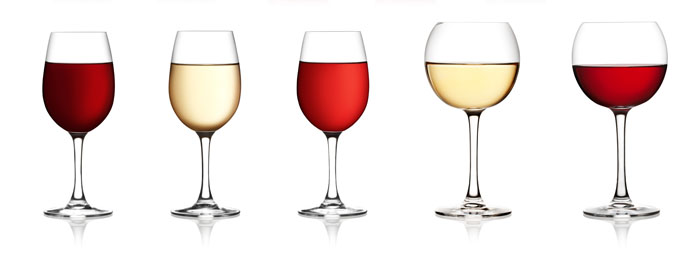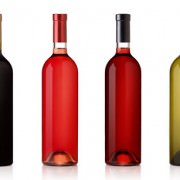28 Terms that Make You Sound Like a Sommelier (Part 1)
Want to describe your wines really well (or, um, understand wine descriptions really well)? Using these twenty-eight sommelier terms will have you 86-ing your wines like mad, and it will even help when you purchase new wines. Ready to sound like an expert? Here are the first fourteen terms you need to know. (Check out “28 Terms that Make You Sound Like a Sommelier (Part 2)” for the rest of the terms.)
1. Sight. The wine’s look is an important descriptor. Is it clear? Does it have sediment? Is it cloudy? Hazy? Brilliant? The experts talk about this, why can’t you? Since you’re reading this post, I’d venture to guess that you’ve got this “sight” thing down.
2. Color. Is it ruby? Garnet? Purple? Salmon? Straw? Gold? Provide a distinct color for your guests to really picture themselves drinking this wine.
3. Flocculation. This is a fancy term for particles in the wine. If you see these in white wines, it means that the winery did not cold stabilize (A.K.A. immediately chill) their wine, which is no big deal. The little flotsam in white wines should dissolve if you let the wine warm for few minutes. When red wines have sediment or particles, that means that they weren’t filtered (rare in domestics) or that they’re aged. Either way, flocculation is completely harmless and when you say it, you sound awesome.
4. Legs or Tears. When you swirl the wine in a glass, it’ll run down the insides as it settles. The runny bits are called “legs” or “tears”. Thick, slow-moving legs indicate a full-bodied, highly alcoholic wine; and thin, fast-moving legs indicate a light-bodied, low alcohol wine. When you start describing the wine’s “shapely” legs, you know you’ve had too much to drink.
5. Nose. This is a fancy term for the scent of the wine. More on that below.
6. Aroma. The aroma of the wine talks about the smells that come specifically from the grapes in the wine. The “primary” aromas are the fruit smells that the wine has, and the “secondary” aromas are the other plant-related scents, such as herbs, flowers, or spices. White wines usually have an aroma reminiscent of apples, pears, citrus, melons, banana, or other tropical smells, and red wines tend to be focused on red- or black-fruit smells such as cherries, strawberries, currants, plums, figs, raisins, or blackberries. Wine can (and usually does) have other smells, but those are related to the winemaking process.
7. Bouquet. I don’t want to keep you wondering too long, so here’s that term that has to do with the winemaking process. Known as “tertiary” aromas, these smells include things like wood characteristics (like oak or smoke or toast) and the smell that the wine develops as it ages (like the scent of leather or tobacco). Bouquets usually take years to develop, so don’t mention the word bouquet when you’re describing a recent vintage.
8. Fruit-forward. This is usually a safe bet for describing domestics, and it means that the wine’s fruitiness is really obvious. If you sniff the wine and say, “Wow! That totally smells like apples!” you’ve got a fruit-forward wine.
9. Earthy. If your wine’s aroma isn’t fruit-forward, it’s probably earthy. Can you smell damp soil, chalk, slate, wet rocks, or mushrooms? You’ve got an earthy wine—and it’s safe to bet that it’s from Europe.
10. Wood. This would also be part of the bouquet, because the last time I checked, grapes didn’t smell like wood. This could come out as oakiness, or as a smoky or toasted flavor, or it could mean that there’s a strong smell of holiday baking spices. It could also mean that the wine smells like a fresh-cut piece of lumber… and that means it’s not likely to be delicious.
11. Vinosity. Meaning “the character wine takes on as it ages.” Another part of the bouquet, this usually comes out as a scent of leather, tobacco, or spice.
12. Terroir. The fancy term for the climate and soil that the grapes grew in.
13. Rustic. You think a wine smells bad? Describe it like the experts and say it smells rustic. I mean, c’mon, rustic would perfectly describe the particular scent of eau de hillbilly, right?
14. Palate. The taste of the wine, especially how (and if) the taste changes as it moves to the different regions of your tongue. These regions are sweet, sour, bitter, salty, umami.
The next post, “28 Terms that Make You Sound Like a Sommelier (Part 2)” contains the final fourteen terms on this list, including more descriptions of the wine’s taste and texture. Even better, Part 2 shows you how you can put all these terms together into a killer wine description that you can use to write your menu, set up a tasting, and increase your wine revenues.
- Why Your Wine Menu Is Scaring Your Guests - February 27, 2015
- How to Host a Better Restaurant Week and Get More Customers - February 23, 2015
- Choosing Your Restaurant Wine Glass – 3 Approaches - February 16, 2015






